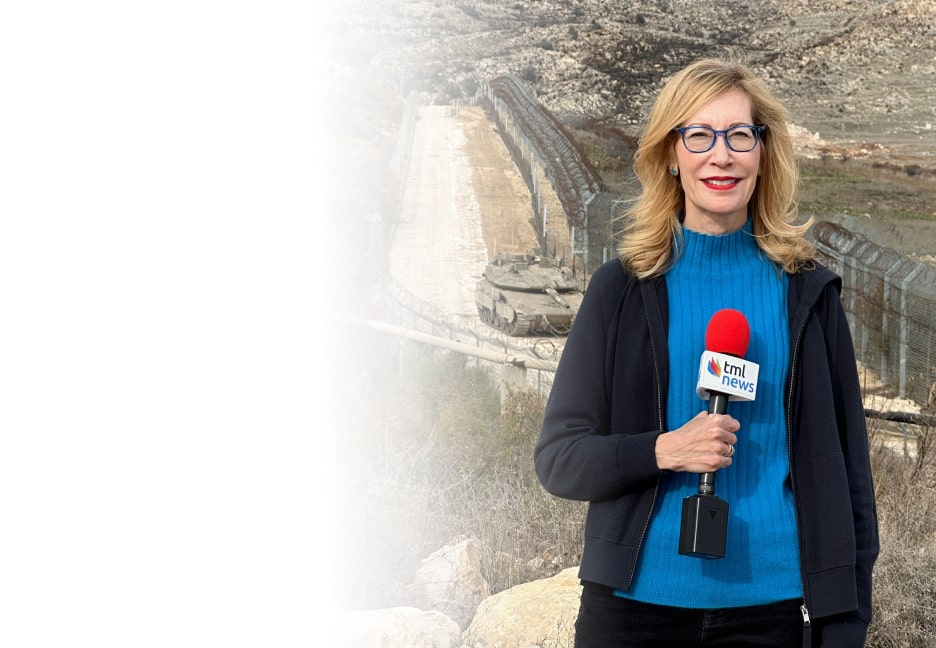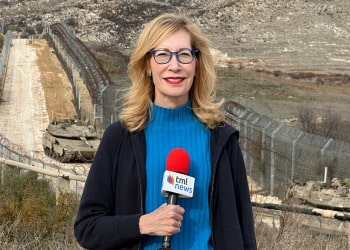Mitchell (Moyshe) Silk, former assistant US treasury secretary for international markets and development, learned Cantonese while washing dishes at a Chinese restaurant in Chicago.
That fluke of life set the foundation for Silk’s long rise as an expert in Chinese law and finance (he later learned Mandarin in a more formal educational setting), eventually serving as head of China practice at the Allen & Overy international law firm before becoming the highest-ranking Hasidic Jew ever to serve in the US federal government.
“I felt an immense amount of pressure and awe knowing that I was walking into a very public place where folks at the highest level of government – the pinnacle of our governmental system where people make very difficult decisions, walking into such an institution with such people looking the way that I looked,” Silk said of his distinctive religious appearance, including long black coat, black hat and long beard.
“And I felt immense pressure to ensure that my every thought and the way that I was projecting those thoughts, my every word and my every action, was in appropriate comportment with the appearance. Because the difference between one word and another word could be the difference between kiddush hashem and chillul hashem,” Silk told The Media Line, using the Hebrew terms, respectively, for sanctification of God’s name and desecration of God’s name.
In addition to playing a key role in trade negotiations between the US and China, Silk was drafted onto the White House team pursuing the so-called deal of the century, or Donald Trump’s Israeli-Palestinian peace plan, which served as a springboard to the recent Abraham Accords normalization agreements between Israel and other Middle Eastern and African countries. While labeled as peace agreements, the pacts are largely economic in nature.
Each of the plans and the economic development that was contemplated was cross-border, involving up to four or five countries in each of the projects. And the approach that I took was to rely on my skills in energy and infrastructure
Silk was tasked in the Treasury Department with taking the work he had been doing on energy in Latin America and in Asia-Pacific and think about whether he could apply the techniques to the Middle East. “The basic starting point is that there is a $15 trillion global infrastructure funding gap that is required to achieve baseline growth in energy and infrastructure through the year 2040,” Silk said.
This is the gap between projected investment and the amount needed to provide adequate global infrastructure by 2040, according to the Global Infrastructure Hub. Tight government funds are increasingly going toward health care, education and pension obligations, with governments loath to risk precious cash on sometimes-risky infrastructure investments, which are often too long-range in nature to serve their political ends. Meanwhile, private investors aren’t committing the necessary capital because governments aren’t creating investment-ready project pipelines, producing a circle of growing infrastructure shortages.
This holiday season, give to:
Truth and understanding
The Media Line's intrepid correspondents are in Israel, Gaza, Lebanon, Syria and Pakistan providing first-person reporting.
They all said they cover it.
We see it.
We report with just one agenda: the truth.


Silk developed plans to assist partner countries in Latin America, Asia and elsewhere in employing private capital solutions, developing frameworks and proposals on how US government partners could consider offering out and structuring the investment opportunities in energy and infrastructure in each of those countries. He then applied this idea to the Middle East.
“I formulated a couple of compartmentalized plans, each of which were rather large in and of themselves, that were really regional economic growth plans that were contemplated to be executed through regional integration. In other words, each of the plans and the economic development that was contemplated was cross-border, involving up to four or five countries in each of the projects. And the approach that I took was to rely on my skills in energy and infrastructure. And one of those plans was a part of the Peace To Prosperity conference,” said Silk, referencing the 2019 US-led two-day workshop in Bahrain that served as a preview of America’s investment-and-trade-led approach to Middle East diplomacy.
Silk looked to regional cooperation endeavors like the EastMed Pipeline, connecting the Israeli Leviathan and Cypriot Aphrodite gas fields in the Eastern Mediterranean to Europe – a project backed significantly by the U.S, which is pushing its European partners to maintain a diversification policy of their energy imports. The US-Israeli consortium supplying Jordan with gas for 15 years from the Mediterranean was also viewed as a model.
Silk told The Media Line that the US and Israel have set the table for future private capital investment he believes will be critical in the coming years. In addition to the long-running Joint Economic Development Group dialogue between the two countries, Silk led two other dialogues held in the last year, including one last March dealing with financial tech.
“Our friends in Israel gathered a group of really great private sector folks – some of the leading fintech (financial technology) sponsors and entrepreneurs. And we spent half a day talking about key issues impacting on the market and then we spent another half day on a government-to-government basis talking about issues of common concern in policy and regulation, all with a view toward boosting more US-Israel activity in the fintech space,” Silk said.
Another dialogue held at the request of Israel’s Ministry of Finance several months ago focused specifically on financial regulatory and financial markets issues, led by Silk and Shira Greenberg, chief economist at the ministry.
“I do hope that that’s going to provide a foundation for continued collaboration and greater and more impactful integration of the US and Israel markets,” said Silk.
Outside of his chance encounters with Middle East peace, China took up the bulk of Silk’s time at Treasury. China has become quite a hot potato in the US-Israel relationship, as well. Israel invested an immense amount of political capital trying to solicit Chinese infrastructure investment, and China currently stands as Israel’s second-largest trading partner and a significant foreign investor. But, fearful about what Chinese control over, and involvement in, Israeli ports, transport and tech could mean for sensitive US military operations there, the US insisted that Israel curtail and rethink its leap into a relationship with China. This led to the 2019 development of a new Israeli mechanism to monitor foreign investments.
“The US government has been very actively engaged in advising the Israelis on their emerging investment security regime. We were pleased to see the great developments Israel was realizing and achieving in this area, and we were pleased that Israel has now started to implement a formal investment screening regime, which is still in development,” Silk said.
Silk says that the US reformed its investment security law a couple of years ago.
“And it’s a pretty scary space in terms of what is going on that relates to investors stealing technology, wrongfully using technology, encroaching on intellectual property rights,” he said. “What we have seen in the extraordinary economic development in Israel is so much of it is fueled by the growth of the enormous and very vibrant tech sector in Israel. And I’m rather concerned that the laws and regulations that Israel is developing in the investment security space are not keeping pace with foreign investment in the area.”
He added: “So for the time being all might be very fine in that there’s a ton of money that’s flowing in, but my concern is three, five, seven, 10 years down the line, what will be the case if there’s too much monkey business by foreign investors from certain countries or foreign investors that are engaged in predatory practices particularly that relate to intellectual property?”
The administration of newly inaugurated US President Joe Biden has been vocal about its desire to build upon the success of the Abraham Accords. It is clear, though, that it has a much different way of going about diplomacy than the preceding administration. In fact, Secretary of State Tony Blinken has thus far reached out to 23 foreign leaders, plus NATO. But, the Saudis, Emiratis and Egyptians have yet to receive a call in what could very well be a message from the new administration regarding its diplomatic posture.
And whether Silk’s infrastructure/development-led peace is a piece of the Middle East’s future could very well be determined by other chance circumstances even more unlikely than his tenure at Treasury.